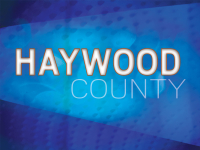Pivot points: WCU art museum presents poetry and painting from three inter-related generations
By Michael Beadle
“Pivot Points” is not your typical art exhibit.
Then again, the new Fine Art Museum on the campus of Western Carolina University in Cullowhee is building a reputation for unique exhibitions that challenge typical notions of what art can be.
This latest exhibit, a mix of poems and abstract paintings, features six poets and six painters who share a love of language, whether it’s written in words or colorfully brushed on a canvas. Organized by two faculty members from Virginia Commonwealth University’s painting and printmaking departments, the exhibit goes a step further by examining the relationships between teachers and students. The show brings together three generations of painters and poets, one generation influencing and mentoring the next. Among the painters, Victor Kord and Richard Lazzaro mentored Sally Bowring and Reni Gower, who mentored Valerie Bogdan and Beth Weisgerber. Among the poets, Larry Levis and Dave Smith mentored Gregory Donovan and Elizabeth Seydel Morgan, who mentored Joshua Poteat and Laura-Gray Street. More than a co-mingling of art and verse, “Pivot Points” shows the connection between artists and writers as they create and find new ways to express themselves from one generation to the next.
The exhibit, which will be up until March 26, features a gallery talk by painter Reni Gower and a poetry reading by Joshua Poteat at 4 p.m. Thursday, March 23, at the Fine Art Museum. “Pivot Points” has toured galleries in Massachusetts, Maryland, Virginia and Lima, Peru. Originally, it was scheduled to come to WCU in the fall of 2004, but construction delays postponed the opening.
It was worth the wait.
The poems and paintings have been interspersed and framed on the walls (at the discretion of the art museum’s installation crew), and they are intended to be viewed as individual pieces rather than one. There is a kind of organic theme to the show where poems delve into nature and paintings involve subjects that resemble the flow and chaos of natural phenomenon.
In painter Reni Gower’s Pivot series, belts of vibrant circles and bar codes run across the canvas like a candy-striped assembly line amidst a kind of cloudy swirl you might find in the atmosphere of Jupiter. And if Gower creates belts, the sunset earth tones in Sally Bowring’s paintings would make for some dreamy shirts and skirts.
There’s an unspoken language alive and teaming in these paintings — experiments in form and color that invite all sorts of interpretations. As artist Beth Weisgerber plays with ink, acrylic and watercolor and turns them into explosions of galactic filaments, Richard Lazzaro produces squiggly scribbles and dangling doodles (inspired by Chinese brush painting) as if they were in cells under a microscope.
The poets, meanwhile, offer their own interpretations of memory and existence. Elizabeth Morgan’s poem, “Without a Philosophy,” welcomes the reader into her world with the opening lines, “Toward the end of this summer, / this long labyrinth, / I thought of you in a clearing ...”
In “The Adamsons’ Peacocks,” Morgan recreates a scene after a car wreck. There’s a terrifying sound like “... The long vowels of howling the long hours of the first birth ... Like brakes too late, like any passion over the limit ....” There are moments in nature made timeless by these poets and illustrated so well you don’t need photographs of the places they create — they are made so real already. In Gregory Donovan’s “Belle Isle,” there’s “snow slipping through the chafed branches, / the mottled grey and black branches, their shells / of clear shining lacquer, the red berries and green / holly sharp against the ice-glazed brush.” In Dave Smith’s poem, “Warren’s Flowers,” a visit to a somber pond reveals “slick newts eyeing me, / the moss that clung like unsloughed skin, / a bottom no weight could hold long on.” In one poem, Donovan pines over John Coltrane while in another Larry Levis waxes on Caravaggio.
Just as the painters experiment with patterns or imagery, so too do the poets. Just as a certain color or form triggers emotions, so too can poetic lines, arranged in tightly packaged stanzas or free-floating on the page like shards of a broken crystal. “Pivot Points” seems to blur the lines between the visual image and the written word. If a picture is worth a thousand words, a word is worth a thousand pictures. And which seems more ambiguous with its interpretations — the mysterious poem or the abstract painting?
Each will certainly entice the viewer to take a closer look. As the Greek poet Simonides once wrote, “Painting is silent poetry, and poetry is painting with the gift of speech.”
For more information about “Pivot Points,” contact Martin DeWitt, director of the WCU Fine Art Museum, at 828.227.3591 or visit the museum on the Web at www.wcu.edu/fapac.





